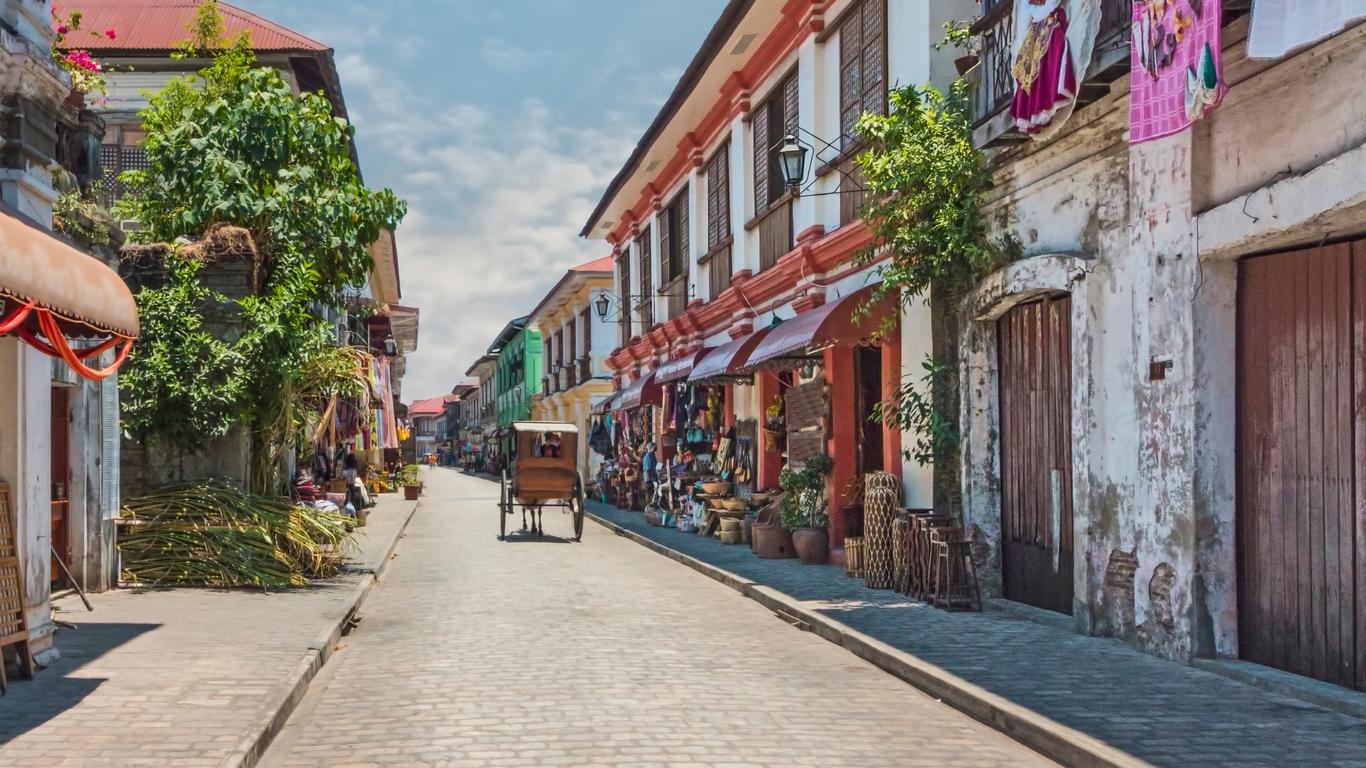Located on the northwestern coast of the Philippines, the city of Vigan is the capital of Ilocos Sur province. The only UNESCO World Heritage City in the country, it is home to over 180 historic houses, impressive colonial churches, fascinating museums and delicious cuisine.
A good place to begin a Vigan exploration is in the Mestizo District. It allows visitors a glimpse into the colonial history of the city. Walk the streets admiring the Spanish and Asian architecture of houses built by the early Chinese traders. Eagle-eyed moviegoers may recognise some of the streets from the film “Born on the Fourth of July”. Continue to St. Paul’s Metropolitan Cathedral. Built around 1790 by Augustinians, it has an eight-sided bell tower which highlights its Feng-shui influences. Nestled close to the river and the cathedral lies Plaza Burgos. The bustling square is known for its monuments and street food stalls. Visitors should sample the empanada, a savoury pastry filled with meat and vegetables popular with locals. At the opposite end of the cathedral sits Plaza Salcedo, where dancing fountains illuminate the city with a kaleidoscope of colours after dark. Those wishing to delve deep into local history can do so in one of Vigan’s museums. The Philippine National Museum houses local artefacts, jewellery, costumes and dioramas displaying historical events which occurred in Ilocos Sur. A plethora of antique and souvenir shops can be found in the Mestizo District around the streets of Crisologo and Plaridel. Alternatively, try haggling for gifts at Vigan Public Market.
Getting around Vigan City Centre is possible on foot, as the streets are fascinating to explore and attractions are close to one another. Another option is to travel via tricycle or horse-drawn carriage. Visitors arriving from Manila can do so by bus, as there are regular services with a journey time of around 10 hours. Vigan also has a small airport for domestic flights.
Vigan was originally a coastal trading post for Chinese traders. When the Spanish captured and settled the city in 1572, it became a centre of religious and political power in the Ilocos Sur province. Today, it is home to a melting pot of cultures with colonial buildings and cobbled streets, international restaurants and a rich, fascinating heritage which stretches back centuries.





